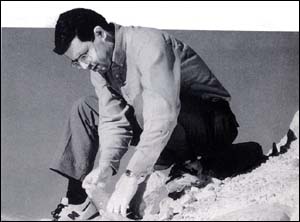
A puzzling reference to "agriculture in the fortress of Masada" by Josephus Flavius, a noted Jewish historian and general of the first century A.D., may now be better understood thanks to a Weizmann Institute study recently described in Geochimica et Cosmochimica Acta. Based on chemical and isotopic analyses of wood preserved in the Roman rampart used in the storming of Masada, the study indicates that the climate in that extremely arid region was cooler and more humid two thousand years ago. Thus it may have been more feasible to engage in agriculture then than it is today.
The research was carried out by Dr. Dan Yakir and Prof. Joel Gat of the Institute's Department of Environmental Sciences and Energy Research, in Cooperation with Prof. Arie Issar of the Ben-Gurion University of the Negev.
Masada was the last Jewish fortress to hold out against the Romans after Jerusalem was conquered in 70 A.D. Josephus reports that Herod the Great (king of Judea from 37 to 4 B.C.), who had fortified the site, reserved the top of the hill for agriculture "for the preservation of those committed to the fortress." This reference has puzzled investigators of that period, since today's extremely arid climate in that region -- the eastern margin of the Judean Desert -- cannot support agriculture.
The Romans had stormed the fortress by advancing their siege machines over a rampart made largely of tamarisk wood covered by soil. This wood must have been of local origin since tamarisk trees are characteristic of the Masada region, while pine -- the most likely source of timber in higher elevations or the coastal plain -- was completely absent from the rampart. The researchers dug out samples of wood along this structure and compared the isotopic composition of its cellulose to that of cellulose from tamarisk trees growing in the region today.
The samples of ancient cellulose were found to be depleted in two stable isotopes -- carbon 13 (13C) and oxygen 18 (18O) -- as compared to the modern wood. Since higher 13C values result from stress factors such as drought or salinity, and higher 18O concentrations are associated with low humidity, the findings indicate that the climate was more amenable to agriculture two thousand years ago than it is now.
Dr. Yakir holds the Rowland Schaefer Career Development Chair. The research was supported by the German-Israel Fund.
